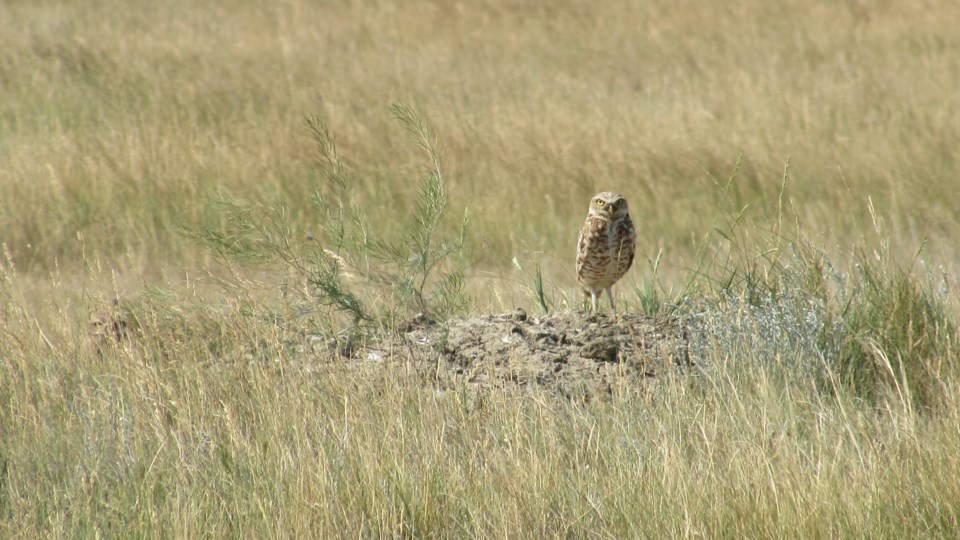Burrowing Owls have returned to the prairies after a long migration from their wintering grounds in Texas and Mexico. Breeding season is currently underway for these endangered owls. The female burrowing owls are now incubating the eggs (average 6-12), while the males can often be seen standing next to the burrow or on nearby fence posts.
��
These unique owls can be identified by their small size (~9 inches tall) and light and dark brown mottled plumage with white spots. They have round heads with large yellow eyes and white ‘eyebrows’. Their long featherless legs give them the appearance of walking on stilts. Burrowing owls are one of the smallest owls in Canada and the only species of owl that lives underground. The Short-eared Owl is sometimes confused with the Burrowing Owl, as they nest on the ground. They can be distinguished from the Burrowing Owl by their larger size, feathered legs, streaked breast and dark eye patches.
��
Despite their name, Burrowing Owls do not dig their own burrows. Instead they rely on abandoned burrows from badgers, ground squirrels (gophers) and other burrowing mammals. Burrowing Owls coexist very well with cattle because the shorter grass on a grazed pasture allows them to sight predators more efficiently. They also use the manure to line their burrows to absorb moisture, regulate temperature, attract insects for food and hide their scent from predators.
��
If you find Burrowing Owls in your pasture, celebrate! Not only are you hosting an iconic prairie species, they provide many advantages including free pest control.�� According to Nature Saskatchewan’s Habitat Stewardship Coordinator, Kaytlyn Burrows, “Burrowing Owls eat huge numbers of insects, mice, voles and grasshoppers. Over the course of a summer, one owl family can consume up to 1800 rodents and 7000 insects!”
��
Nature Saskatchewan’s voluntary stewardship program, Operation Burrowing Owl, works with landowners and managers to conserve Burrowing Owl habitat and monitor population numbers at participating sites. Operation Burrowing Owl records sightings to help determine the population trend and distribution of the Burrowing Owl throughout Saskatchewan. The information can then be used towards efforts to conserve and restore the habitat and population of these charismatic birds.
��
“Without the voluntary efforts of landowners, land managers, and the general public, recovery of this unique prairie owl would not be possible” says Burrows. She encourages the public to “get out there this summer and explore, you never know what you will find.” If you are lucky enough to see a Burrowing Owl, please give a “hoot” by calling Nature Saskatchewan’s toll-free HOOT Line, 1-800-667-HOOT (4668) or email [email protected]. “When you report a sighting you are playing a very important role in Burrowing Owl recovery. Every sighting is critical!” says Burrows. Private information is never shared without permission.




